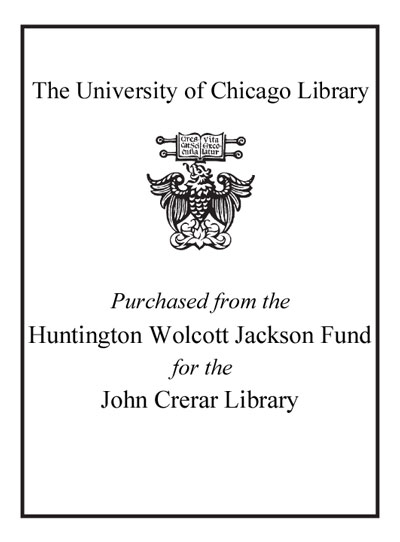Statistical inference for piecewise-deterministic Markov processes /
Saved in:
| Imprint: | London : ISTE, 2018. |
|---|---|
| Description: | 1 online resource. |
| Language: | English |
| Series: | Mathematics and statistics Mathematics and statistics series (ISTE) |
| Subject: | |
| Format: | E-Resource Book |
| URL for this record: | http://pi.lib.uchicago.edu/1001/cat/bib/11790505 |
Table of Contents:
- Preface xi; Romain AZAIS and Florian BOUGUET List of Acronyms xiii Introduction xv; Romain AZAIS and Florian BOUGUET Chapter 1. Statistical Analysis for Structured Models on Trees 1; Marc HOFFMANN and Adelaide OLIVIER 1.1. Introduction 1 1.1.1. Motivation 1 1.1.2. Genealogical versus temporal data 2 1.2. Size-dependent division rate 4 1.2.1. From partial differential equation to stochastic models 4 1.2.2. Non-parametric estimation: the Markov tree approach 6 1.2.3. Sketch of proof of Theorem 1.1 10 1.3. Estimating the age-dependent division rate 16 1.3.1. Heuristics and convergence of empirical measures 17 1.3.2. Estimation results 20 1.3.3. Sketch of proof of Theorem 1.4 24 1.4. Bibliography 37 Chapter 2.
- Regularity of the Invariant Measure and Non-parametric Estimation of the Jump Rate 39; Pierre HODARA, Nathalie KRELL and Eva LOCHERBACH 2.1. Introduction 39 2.2. Absolute continuity of the invariant measure 43 2.2.1. The dynamics 43 2.2.2. An associated Markov chain and its invariant measure 45 2.2.3. Smoothness of the invariant density of a single particle 47 2.2.4. Lebesgue density in dimension N 50 2.3. Estimation of the spiking rate in systems of interacting neurons 51 2.3.1. Harris recurrence 55 2.3.2. Properties of the estimator 56 2.3.3. Simulation results 58 2.4. Bibliography 61 Chapter 3. Level Crossings and Absorption of an Insurance Model 65; Romain AZAIS and Alexandre GENADOT 3.1. An insurance model 65 3.2. Some results about the crossing and absorption features 70 3.2.1.
- Robust Estimation for Markov Chains with Applications to Piecewise-deterministic Markov Processes 107; Patrice BERTAIL, Gabriela CIOŁEK and Charles TILLIER 4.1. Introduction 107 4.2. (Pseudo)-regenerative Markov chains 109 4.2.1. General Harris Markov chains and the splitting technique 110 4.2.2. Regenerative blocks for dominated families 111 4.2.3. Construction of regeneration blocks 112 4.3. Robust functional parameter estimation for Markov chains 114 4.3.1. The influence function on the torus 115 4.3.2. Example 1: sample means 116 4.3.3. Example 2: M-estimators 117 4.3.4. Example 3: quantiles 118 4.4. Central limit theorem for functionals of Markov chains and robustness 118 4.5. A Markov view for estimators in PDMPs 121 4.5.1. Example 1: Sparre Andersen model with barrier 122 4.5.2. Example 2: kinetic dietary exposure model 125 4.6.
- Robustness for risk PDMP models 127 4.6.1. Stationary measure 127 4.6.2. Ruin probability 132 4.6.3. Extremal index 136 4.6.4. Expected shortfall 138 4.7. Simulations 140 4.8. Bibliography 144 Chapter 5. Numerical Method for Control of Piecewise-deterministic Markov Processes . 147; Benoite DE SAPORTA and Francois DUFOUR 5.1. Introduction 147 5.2. Simulation of piecewise-deterministic Markov processes 149 5.3. Optimal stopping 150 5.3.1. Assumptions and notations 150 5.3.2. Dynamic programming 153 5.3.3. Quantized approximation 154 5.4. Exit time 158 5.4.1. Problem setting and assumptions 158 5.4.2. Recursive formulation 159 5.4.3. Numerical approximation 161 5.5. Numerical example 162 5.5.1. Piecewise-deterministic Markov model 162 5.5.2. Deterministic time to reach the boundary 164 5.5.3. Quantization 166 5.5.4.
- Piecewise-deterministic Markov Processes for Spatio-temporal Population Dynamics . 209; Candy ABBOUD, Rachid SENOUSSI and Samuel SOUBEYRAND 7.1. Introduction 209 7.1.1. Models of population dynamics 209 7.1.2. Spatio-temporal PDMP for population dynamics 210 7.1.3. Chapter contents 212 7.2. Stratified dispersal models 212 7.2.1. Reaction-diffusion equations for modeling short-distance dispersal 212 7.2.2. Stratified diffusion 215 7.2.3. Coalescing colony model with Allee effect 216 7.2.4. A PDMP based on reaction-diffusion for modeling invasions with multiple introductions 221 7.3. Metapopulation epidemic model 223 7.3.1. Spatially realistic Levins model 223 7.3.2. A colonization PDMP 224 7.3.3. Bayesian inference approach 229 7.3.4. Markov chain Monte Carlo algorithm 235 7.3.5. Examples of results 236 7.4.

